Flux cored welding has revolutionized the world of welding, offering a versatile and efficient solution for a wide range of applications. From construction to shipbuilding, this welding process boasts numerous advantages over traditional welding methods.

But, what makes flux cored welding so special? In this comprehensive guide, we will dive deep into the world of flux cored welding, covering everything from understanding the process to its applications and best practices.
So, strap in and get ready to become a flux cored welding expert!
Contents
- 1 Key Takeaways
- 2 Understanding Flux Cored Welding
- 3 Types of Flux Cored Welding
- 4 Essential Equipment for Flux Cored Welding
- 5 Techniques and Best Practices in Flux Cored Welding
- 6 Comparing Flux Cored Welding to Other Welding Methods
- 7 Applications of Flux Cored Welding
- 8 Summary
- 9 Frequently Asked Questions
Key Takeaways
- Flux cored welding is a versatile and efficient process that utilizes a tubular wire electrode filled with flux to create strong welds.
- It comes in two types, self-shielded (FCAW-S) and gas-shielded (FCAW-G), each offering distinct advantages for various applications.
- Essential equipment includes welding machines, wire feeders, safety gear & techniques such as voltage settings & metal preparation for improved weld quality.
Understanding Flux Cored Welding
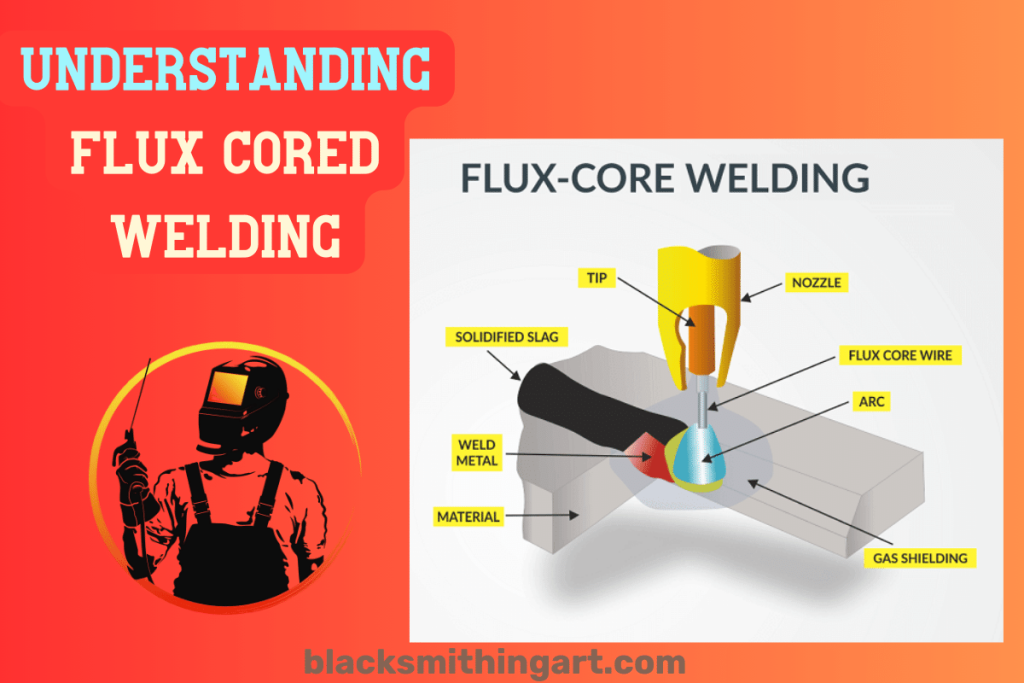
Flux cored welding, or flux cored arc welding (FCAW), also known as flux core arc welding, is a game-changing welding process that utilizes a tubular wire electrode filled with flux to protect the weld from oxidation and contamination.
This innovative method eliminates the need for an external shielding gas, making it perfect for outdoor welding projects and those involving contaminated materials.
The flux core wire, providing the shielding gas and alloy elements, and the welding arc, generating the necessary heat to melt the base metal and filler material, are the key components of flux cored welding.

In contrast to solid wire, flux core wire creates a strong and durable weld that can withstand the test of time.
The Flux Core Wire
At the heart of the flux cored welding process lies the flux core wire or flux cored electrode. This hollow wire is filled with flux, which serves multiple functions during the welding process. The wire melting releases flux.
This then creates a shielding gas around the weld pool, protecting it from any atmospheric contamination. Additionally, the flux provides alloy elements to the weld metal, ensuring a strong and durable finished product.
The unique design of the flux core wire allows for its use in a wide range of applications, from construction to shipbuilding and beyond.
The Welding Arc
Another crucial component of the flux cored welding process is the welding arc. Generated between the workpiece and the wire electrode, the arc melts both the base metal and the filler metal, forming a weld puddle. This puddle eventually cools and solidifies, creating the final weld.
The combination of the flux core wire and the welding arc provides a versatile and effective welding solution that can be used on a wide variety of materials and joint configurations.
Types of Flux Cored Welding
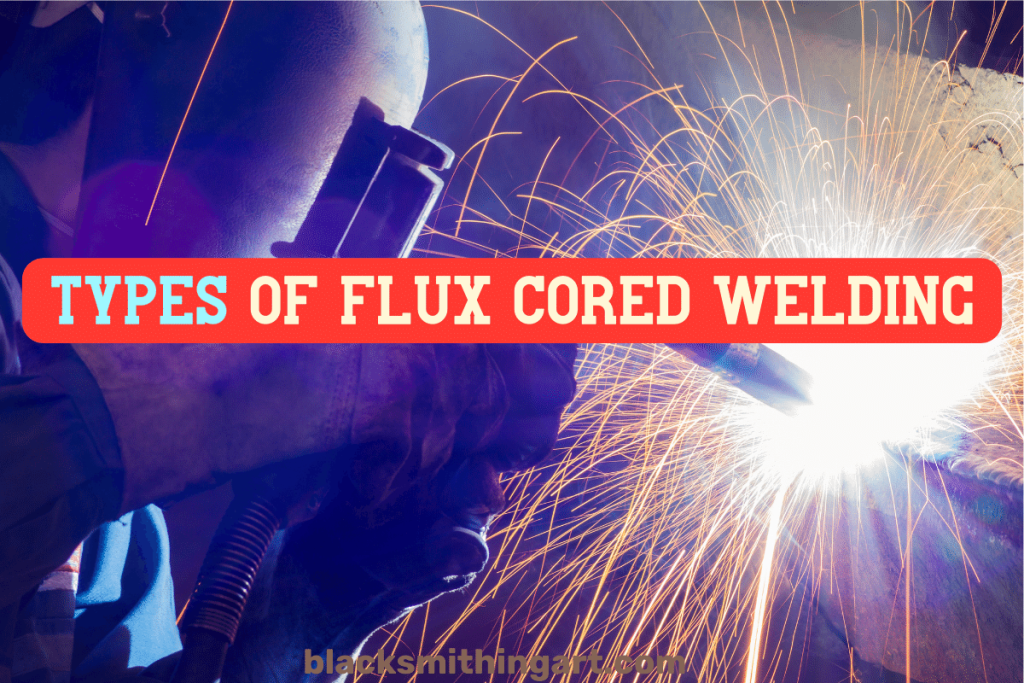
Flux cored welding divides into two main types: self-shielded (FCAW-S) and gas-shielded (FCAW-G). Each type brings its own unique advantages and applications. Therefore, understanding the differences between them is key for welders to select the most suitable process for their project.
The self-shielded process is the most commonly used type of flux cored welding, but dual shield welding is another popular method.
Self-Shielded Flux Cored Welding (FCAW-S)

Self-shielded flux cored welding (FCAW-S) is a popular choice for outdoor and difficult-access welding projects. This process offers several advantages:
- It generates its own shielding gas from the flux, eliminating the need for an external gas source.
- It is well-suited for welding on contaminated materials, as the flux can dissolve mill scale and rust.
- It produces strong and durable welds even in challenging conditions.
FCAW-S is a reliable and efficient welding method for various applications.
Its versatility and portability make it an ideal choice for various applications in the construction, manufacturing, and repair industries.
Gas-Shielded Flux Cored Welding (FCAW-G)
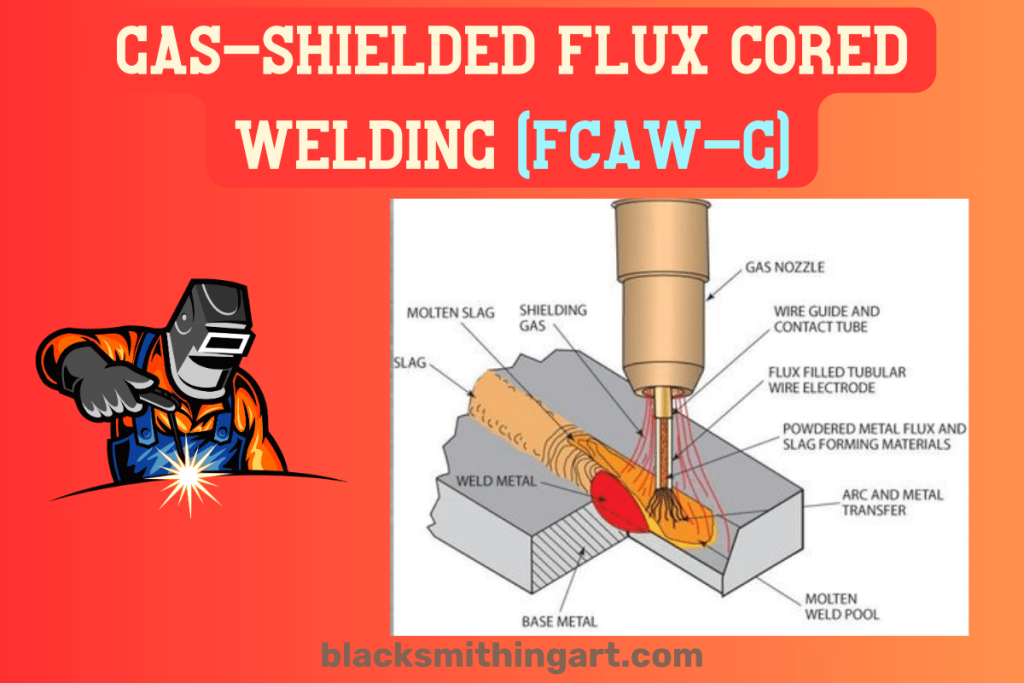
Gas-shielded flux cored welding (FCAW-G), on the other hand, requires an external shielding gas, such as carbon dioxide or a blend of carbon dioxide and argon. This additional gas protection results in higher quality welds with reduced spatter and easier slag removal.
FCAW-G is often favored for welding thicker materials, and its flexibility allows it to be used in a broad range of welding applications, including:
- Construction
- Manufacturing and repair
- Shipbuilding
- Pipelines
Essential Equipment for Flux Cored Welding
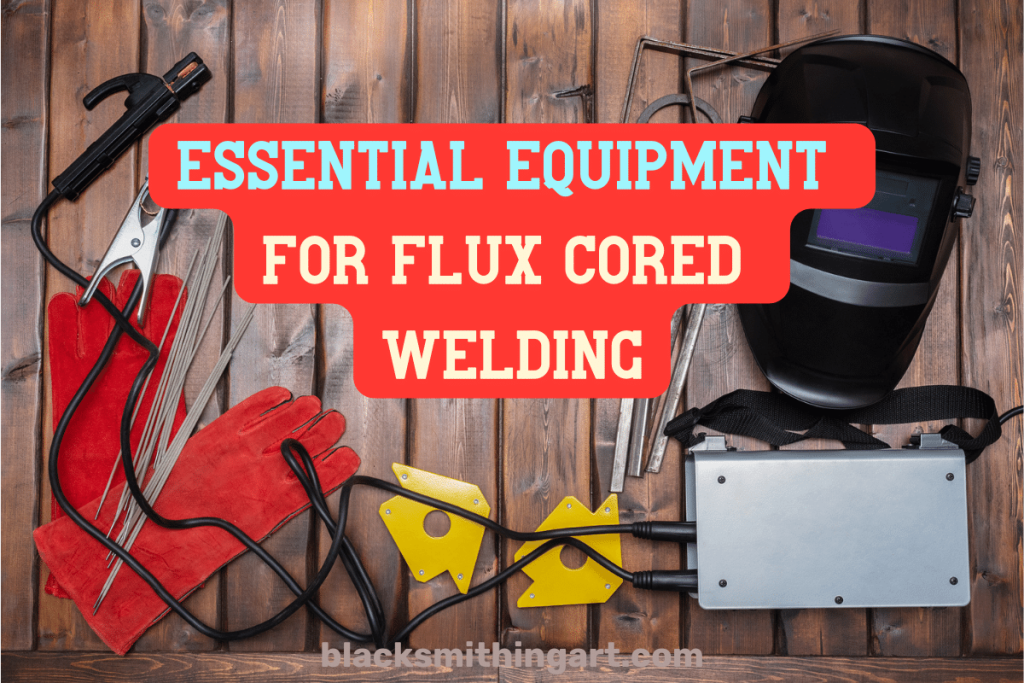
Having the proper equipment is a must for successful flux cored welding. This includes a compatible welding machine, a wire feeder to supply the tubular electrode, and appropriate safety gear to protect the welder during the process.
Equipped with the right tools, such as a welding gun, welders can achieve strong, high-quality welds that stand the test of time.
Welding Machines
Welding machines for flux cored welding should be compatible with the specific wire and shielding gas requirements of the process. This compatibility ensures that the welding machine can generate the necessary heat for the welding process, resulting in optimal penetration and weld quality.
For the best possible results in flux cored welding, the right welding machine must be selected.
Wire Feeders
Wire feeders play a vital role in the flux cored welding process, controlling the delivery of the tubular electrode during welding. These devices are typically composed of:
- A drive motor
- A wire spool
- A wire guide
- A tensioning device
For achieving consistent, high-quality welds, it’s vital that the wire feeder functions correctly and smoothly.
Safety Gear
During the flux cored welding process, safety gear plays a key role in protecting the welder. This includes:
- Safety glasses or a welding helmet to protect the eyes from arc flash
- Welding gloves to shield the hands
- A leather apron to guard the body
- Work boots or shoes for foot protection
- Proper ventilation to maintain air quality
By taking the necessary precautions and using the appropriate safety gear, welders can minimize the risks associated with flux cored welding and ensure a successful welding experience.
Techniques and Best Practices in Flux Cored Welding

Quality and efficiency of the process can be greatly improved by mastering various techniques and best practices in flux cored welding. Some key techniques to consider include:
- Welding patterns
- Proper voltage settings
- Correct wire feed speed
- Maintaining a consistent travel speed
- Using the correct shielding gas
- Preparing the base metal properly before welding
Understanding and implementing these techniques can make all the difference in achieving strong, durable welds.
Welding Patterns
Welding patterns, such as stringer beads and weave beads, can greatly impact the appearance and strength of the weld. The stringer bead method creates a more aesthetically pleasing weld, while the weave bead technique produces a stronger weld with greater penetration.
Welders can optimize both the appearance and strength of their welds by experimenting with different welding patterns and finding the technique most suitable for a specific job.
Polarity and Voltage Settings
Proper polarity and voltage settings are essential for achieving optimal penetration and weld quality in flux cored welding. Self-shielded flux cored welding typically uses direct-current electrode negative (DCEN) polarity, while gas-shielded flux cored welding is most effective with direct-current electrode positive (DCEP) polarity.
The quality of the weld can be greatly improved and defects minimized by using the correct polarity and voltage settings.
Tips for Improved Weld Quality
To improve weld quality in flux cored welding, proper metal preparation is crucial. This includes cleaning the welding area, establishing a reliable ground connection, and maintaining a short stickout.
In addition, maintaining the correct travel angle and a consistent wire stick-out can help ensure a smooth, even weld. Fine-tuning the final parameters based on a few test welds can also help optimize the welding process and ensure the best possible results.
Comparing Flux Cored Welding to Other Welding Methods
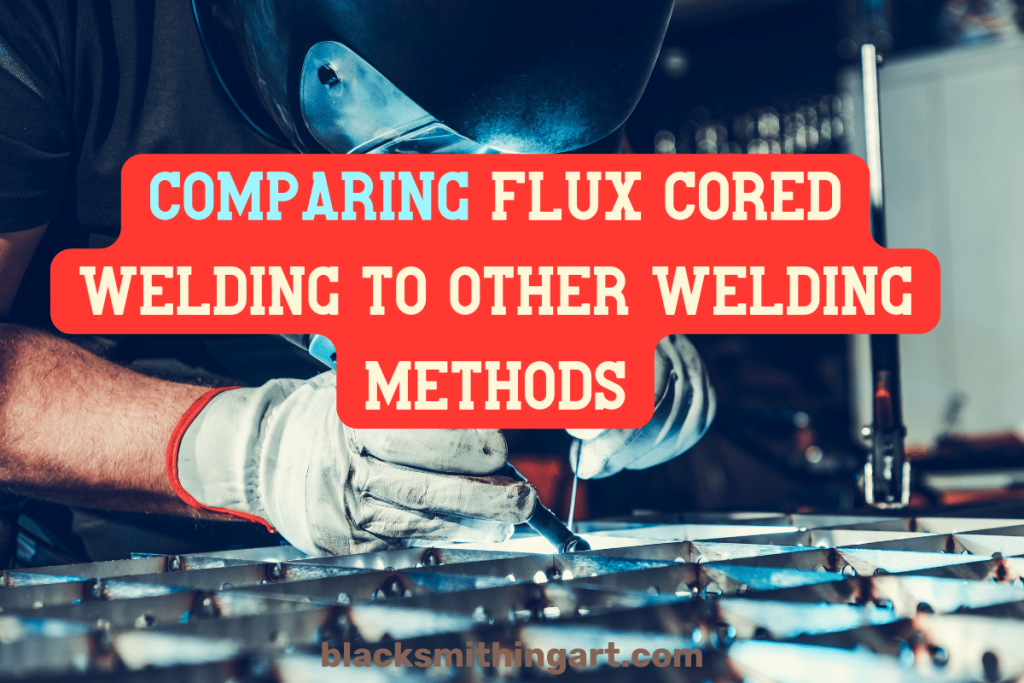
Comparing flux cored welding to other welding methods, such as MIG and stick welding, can be helpful to determine the best welding process for a specific application. By understanding the strengths and weaknesses of each method, welders can make informed decisions about which process is most suitable for their needs.
Flux cored welding is a semi-automatic process that uses a continuous flux cored wire feed and
Flux Cored vs. MIG Welding
Flux cored welding offers several advantages over MIG welding, such as better penetration and suitability for outdoor welding projects.
However, flux cored welding may produce less visually appealing welds compared to MIG welding, as MIG welding typically results in cleaner, smoother welds.
The specific application and desired results ultimately determine the choice between flux cored and MIG welding.
Flux Cored vs. Stick Welding
Flux cored welding is often preferred over stick welding due to its higher deposition rates, faster welding speeds, and ability to weld a wide range of materials, including those that may be contaminated. Stick welding, on the other hand, can be more challenging to master and may produce more smoke during the welding process.
Factors such as efficiency, comfort, and suitability for the specific materials being welded should be considered when choosing between flux cored and stick welding.
Applications of Flux Cored Welding

Flux cored welding is widely used in various industries and applications, including:
- Construction
- Manufacturing and repair
- Shipbuilding
- Pipelines
Its versatility and ability to produce strong, durable welds make it an excellent choice for a wide range of projects and materials.
Construction Industry
In the construction industry, flux cored welding is valued for its high welding speed, portability, and suitability for outdoor use.
Its ability to weld a wide variety of materials, from stainless steel to cast iron, makes it an ideal choice for numerous construction applications, such as structural steel erection, heavy equipment repair, and outdoor welding projects.
Manufacturing and Repair
Manufacturing and repair applications often utilize flux cored welding for its versatility, efficiency, and ability to weld a wide range of materials. Some common applications of flux cored welding include:
- Automotive manufacturing
- Heavy equipment repair
- Construction projects
- Shipbuilding
- Pipeline welding
Flux core welding, also known as flux cored welding, offers a reliable and effective solution for joining and repairing metal components in these industries.
Shipbuilding and Pipelines

Shipbuilding and pipeline industries benefit from the strong, durable welds produced by flux cored welding, as well as its ability to weld at various angles and positions.
The high penetration and consistent mechanical properties of flux cored welds make them ideal for use in these industries, where strength and durability are of the utmost importance.
Summary
In conclusion, flux cored welding is a versatile and efficient welding process that offers numerous advantages over traditional welding methods.
From its ability to weld a wide range of materials and joint configurations to its strong, durable welds, flux cored welding has become an indispensable tool in numerous industries and applications.
By mastering the techniques and best practices associated with flux cored welding, welders can ensure the highest quality results and tackle even the most challenging projects with confidence.
So, go ahead and harness the power of flux cored welding – the possibilities are endless!
Frequently Asked Questions
What is flux-cored in welding?
Flux-cored welding is an arc welding process that uses a continuously-fed tubular electrode with a shielding flux to join two metals. It requires similar equipment to Metal Active Gas (MAG) welding, but does not need a shielding gas to protect the weld pool. This efficient method is often used in DIY projects and in the MIG welding of non-ferrous metals such as aluminum.
Is flux core welding stronger than MIG?
Flux core welding and MIG welding both provide strong welds in most applications, but flux core welding has the added benefit of material penetration that gives it an edge when welding cast iron.
Is flux core welding as good as stick welding?
Both stick and flux-core welding can yield good results, depending on the welder’s skill. Generally, stick welding will produce slightly better welds, but the difference is minimal.
Is flux core welding as good as MIG welding?
Overall, MIG welding is a much better choice than flux core welding due to its superior quality welds and penetration, especially when welding thin material. Gas-shielded welding provides even better welds and is the most common recommendation.
How to weld with flux core?
When welding with flux core, use the pull technique by keeping the gun at a 90 degree angle to the area and start dragging it away from the metal. Move the welding gun to help you see where the joint is and fill in the joint correctly.


